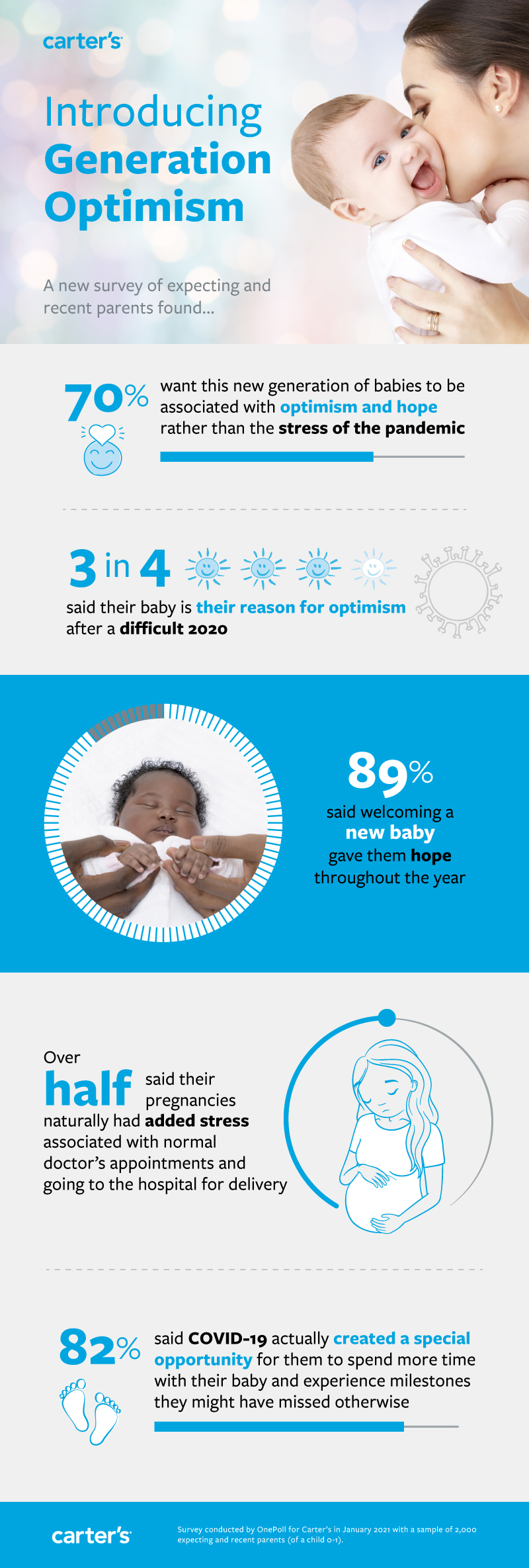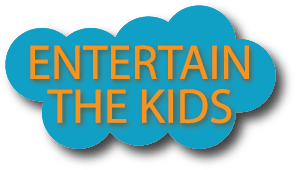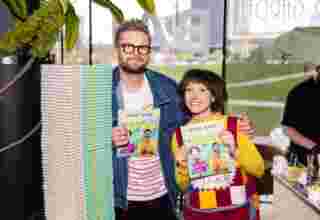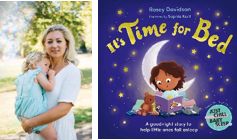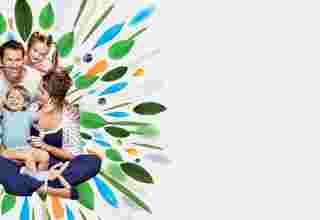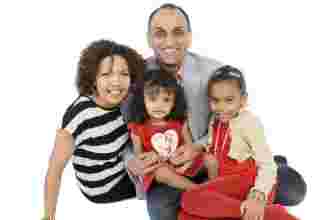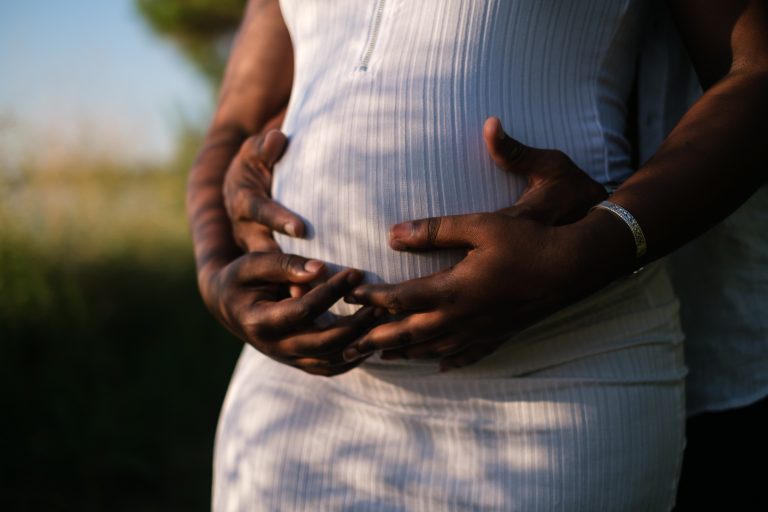
By SWNS Staff
Three-quarters of new and expectant parents said their baby is their reason for optimism after a difficult year, according to new research.
The study asked 2,000 expecting and recent parents about how welcoming a baby in or right after 2020 has made them more optimistic about the future and what is ahead.
Nearly nine in 10 (89%) respondents said that even though 2020 was stressful, welcoming a new baby gave their family hope.
Conducted by OnePoll on behalf of Carter’s, the survey found 73% of respondents said having their new baby completely changed their outlook on life overall.
Seven in 10 respondents also agreed this new generation of children born during COVID-19 should be associated with optimism and hope rather than the stress of the pandemic.
That’s not to say parents were completely stress free, as 53% said the most stressful parts of their pregnancies were naturally the added stress of normal appointments and then actually going to the hospital for delivery (52%).
A further 35% of respondents shared maintaining their social distance when sharing their pregnancy news with loved ones was the hardest thing they experienced during this time.
In fact, the top way respondents shared their good news was via social media (45%), closely following by safely telling people in-person (44%).
“Welcoming a new baby is a life-changing experience, and like many other milestone moments this year, it has been markedly more challenging due to the pandemic,” said Jeff Jenkins, Carter’s Executive Vice President, Global Marketing. “While new parents are facing many unknowns, we’ve found they are also more optimistic and hopeful for what is ahead. We are so inspired by the personal journeys to parenthood that families are embarking on – and that is why we are declaring this new class of babies Generation Optimism.”
Having a baby during the COVID-19 pandemic may have actually been a blessing in disguise for respondents in the long term, as 82% said it created a special opportunity for them to spend more time with their baby and experience milestones they might have missed otherwise.
The top thing respondents looked forward to when having their bundle of joy was seeing their smile (45%), closely followed by holding them (44%).
Four in 10 respondents also shared they looked forward to seeing the joy a baby brings to the entire family (41%) as well as their laughter (42%).
In fact, 79% of respondents said hearing that giggle can instantly make their day better.
Some other baby bests included new baby smell (74%), snuggling a new baby (84%) and watching them sleep (86%).
“Carter’s is with parents from the start, and although the journey looks different right now, parents of this new generation of babies are finding unique ways to bond with each other,” said Jenkins. “From baby showers on zoom to embracing online communities of fellow new parents, the optimism demonstrated by ‘pandemic-era’ parents is truly inspirational.”
TOP THINGS PARENTS LOOK FORWARD TO WHEN HAVING A BABY
- Their smile – 45%
- Holding them – 44%
- Their laughter – 42%
- Seeing the joy a baby brings to the entire family – 41%
- Having them sleep on you – 40%
- New baby smell – 38%
- Shopping for baby clothes – 36%
- Introducing the baby to family and friends – 36%
- The joy of caring for someone else – 34%
- Getting the nursery ready – 30%
- Shopping for baby shoes – 29%
- Wearing matching clothes – 28%
- Sharing our pregnancy news on social media – 27%
- Baby-proofing the house – 23%
MOST STRESSFUL PARTS OF HAVING A BABY DURING COVID-19
- The added stress of normal doctor’s appointments – 53%
- Going to a hospital during the pandemic – 52%
- Not being able to share our pregnancy news with our family in person – 41%
- Maintaining social distancing when sharing our pregnancy news – 35%
TOP WAYS PARENTS SHARED THEIR PREGNANCY NEWS
- Announced on social media – 45%
- Physically visited someone and share the news (while maintaining COVID-19 safety precautions) – 44%
- Shared news via video call – 35%
- Sent announcement cards – 28%
- Sent a company-wide email at work – 26%
